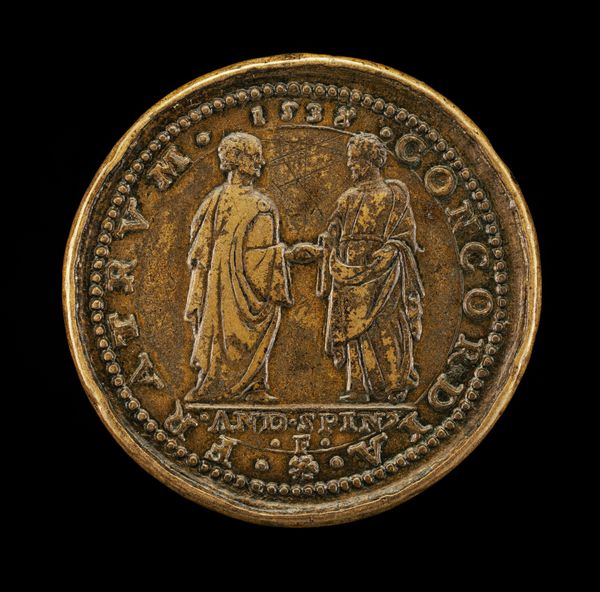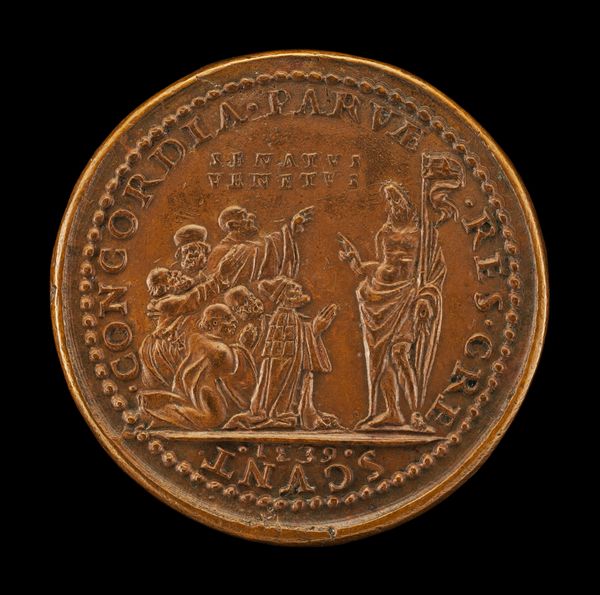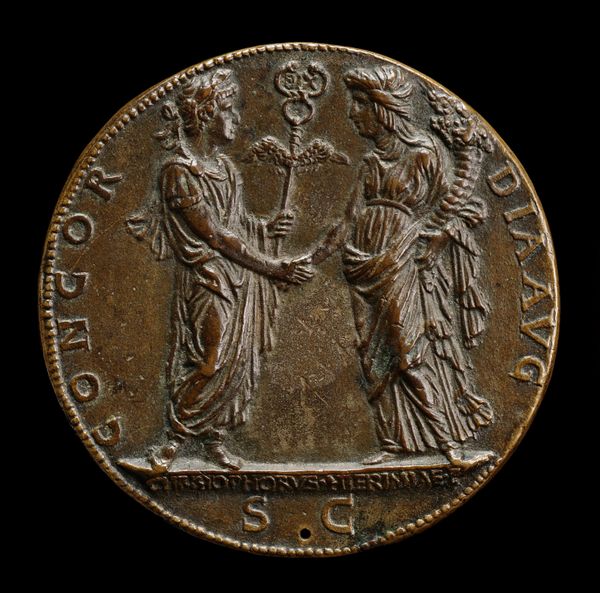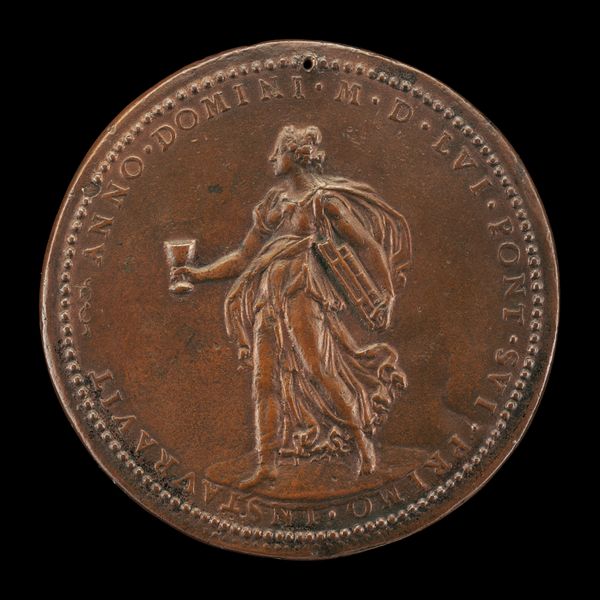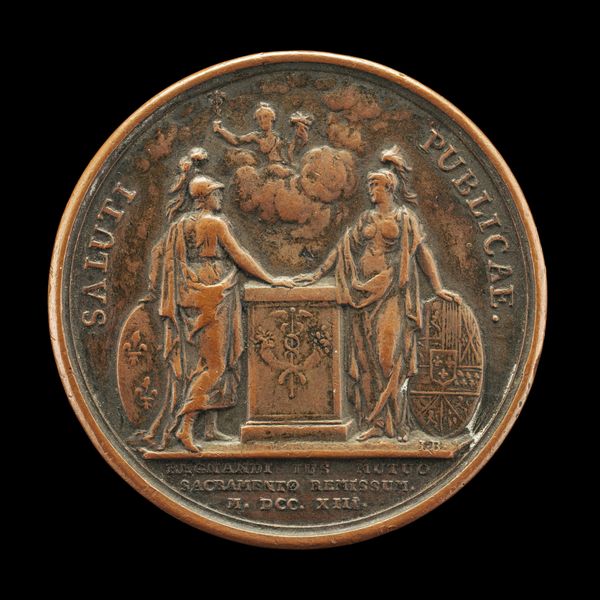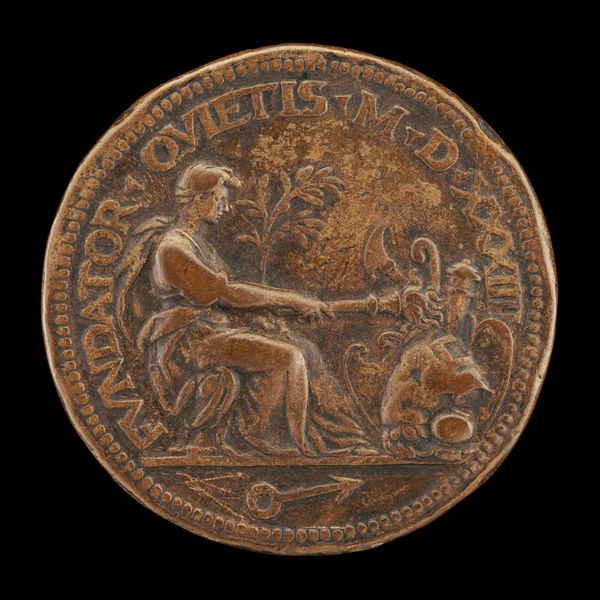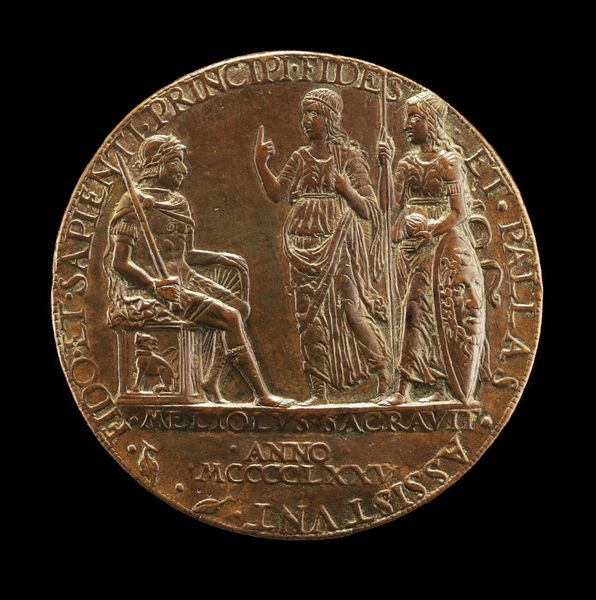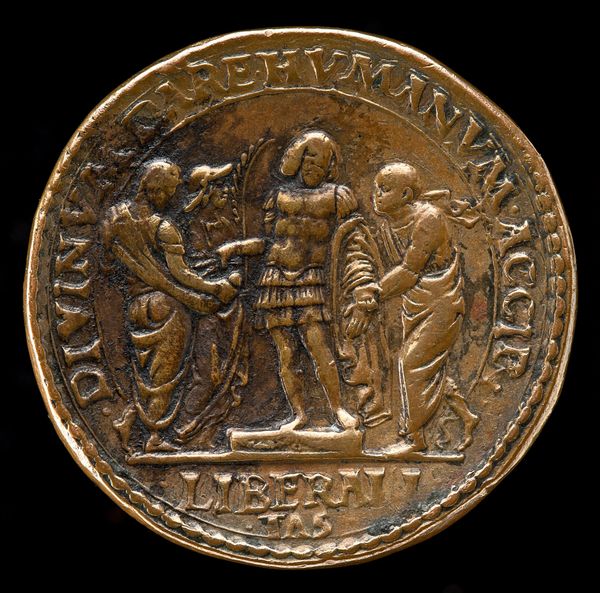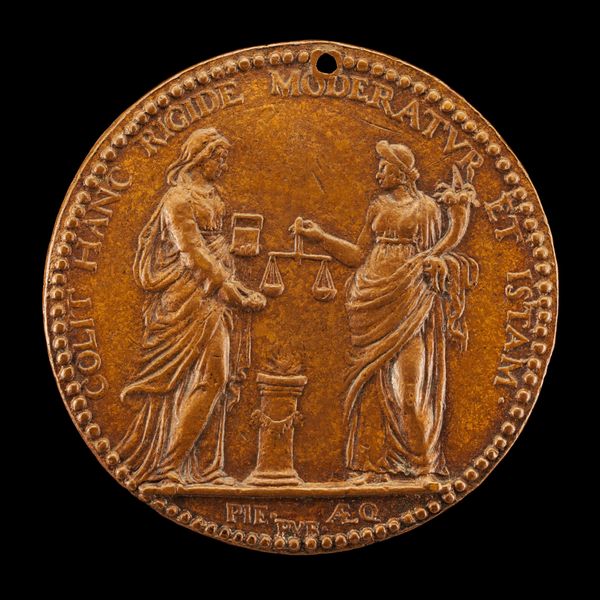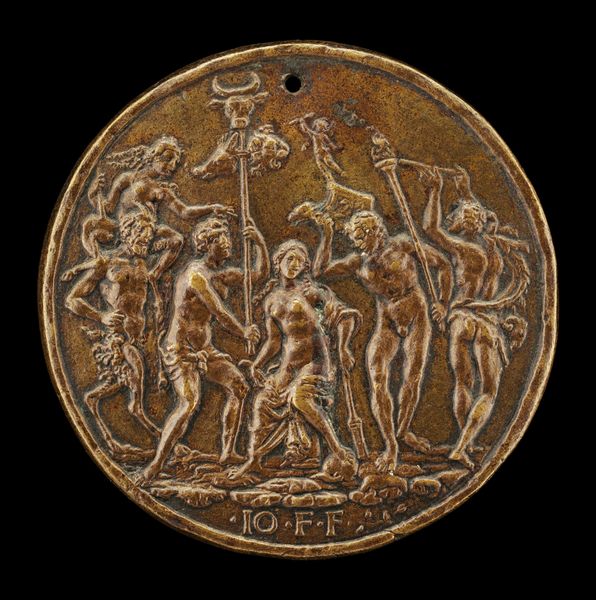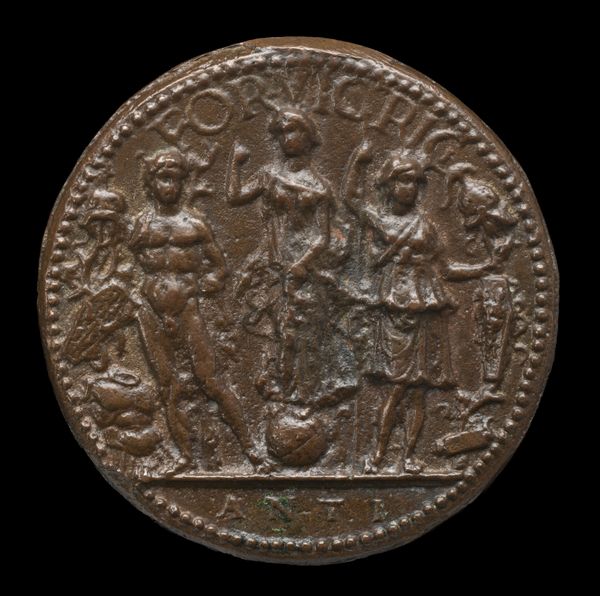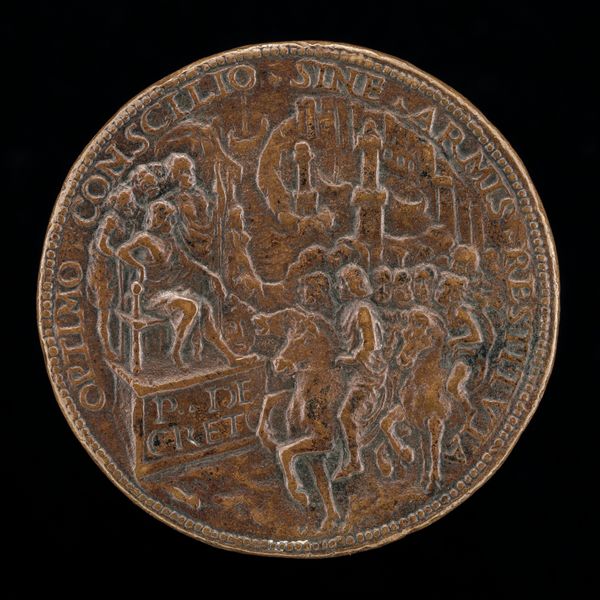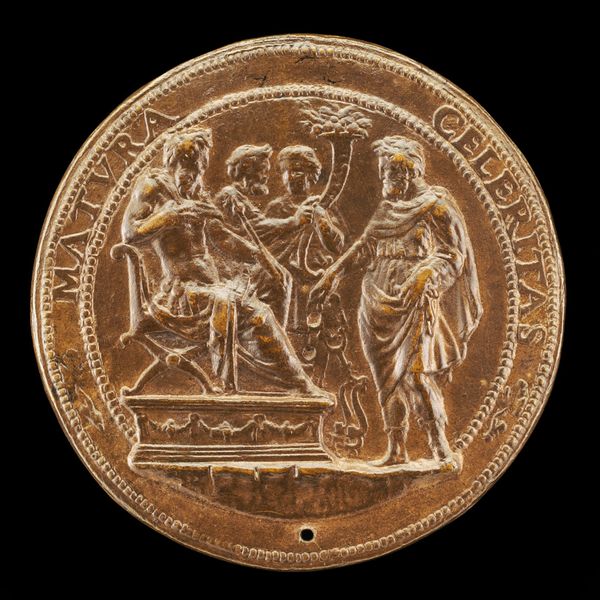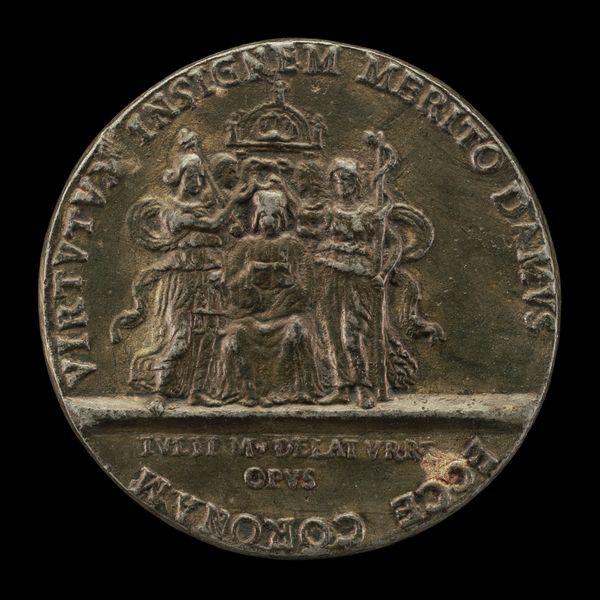![Antonio Da Mula and Marcantonio Trevisan [reverse] by Andrea Spinelli](/_next/image?url=https%3A%2F%2Fd2w8kbdekdi1gv.cloudfront.net%2FeyJidWNrZXQiOiAiYXJ0ZXJhLWltYWdlcy1idWNrZXQiLCAia2V5IjogImFydHdvcmtzLzA2YjZmMzA5LWVjYjAtNDI2NS1hMjE3LTM5YzU4YTg3YThkZS8wNmI2ZjMwOS1lY2IwLTQyNjUtYTIxNy0zOWM1OGE4N2E4ZGVfZnVsbC5qcGciLCAiZWRpdHMiOiB7InJlc2l6ZSI6IHsid2lkdGgiOiAxOTIwLCAiaGVpZ2h0IjogMTkyMCwgImZpdCI6ICJpbnNpZGUifX19&w=3840&q=75)
relief, bronze, sculpture
#
ornate
#
stone
#
relief
#
bronze
#
sculptural image
#
sculpture
#
history-painting
#
italian-renaissance
Dimensions: overall (diameter): 4.01 cm (1 9/16 in.) gross weight: 27.92 gr (0.062 lb.) axis: 6:00
Copyright: National Gallery of Art: CC0 1.0
Editor: We’re looking at a bronze relief sculpture from 1538 titled "Antonio Da Mula and Marcantonio Trevisan [reverse]." It’s a small, circular piece with two figures shaking hands. It feels very formal and…official, somehow. What do you see in this piece, especially considering the period it was created? Curator: Beyond the formal depiction, it’s vital to see this within the context of Renaissance Venice, a powerful mercantile republic. The act of handshaking is significant. It’s not just a greeting; it’s a symbol of concord and agreement, vital for maintaining stability within the Venetian oligarchy. Look at how this image reinforces that with the inclusion of the word "CONCORD". Editor: So, it's like a political advertisement, then? To show the unity? Curator: Precisely! The inscription around the edge would serve a specific, public function. Who were Da Mula and Trevisan, and what role did they play in the Venetian State? Those answers could shift our perception on the work’s historical weight. Were they allies, rivals, or simply important administrators? The Renaissance valued portraits of rulers and powerful elites. This sculpture appears to immortalize powerful men, so to speak. Do you agree that the medium—bronze—affects how we perceive the piece and the men? Editor: It makes it feel more permanent, definitely, than if it were made of, say, wood. It gives off a sense of wealth and importance. Almost like they're literally setting things in stone, or, well, bronze! I'm just starting to get how much history is packed into this little sculpture. It’s much more than just a handshake between two guys. Curator: Absolutely. Understanding art involves placing it within the broader societal structures that influenced its creation and interpretation. What social function did art serve? Editor: I’ll certainly be looking at art with a wider scope now!
Comments
No comments
Be the first to comment and join the conversation on the ultimate creative platform.
